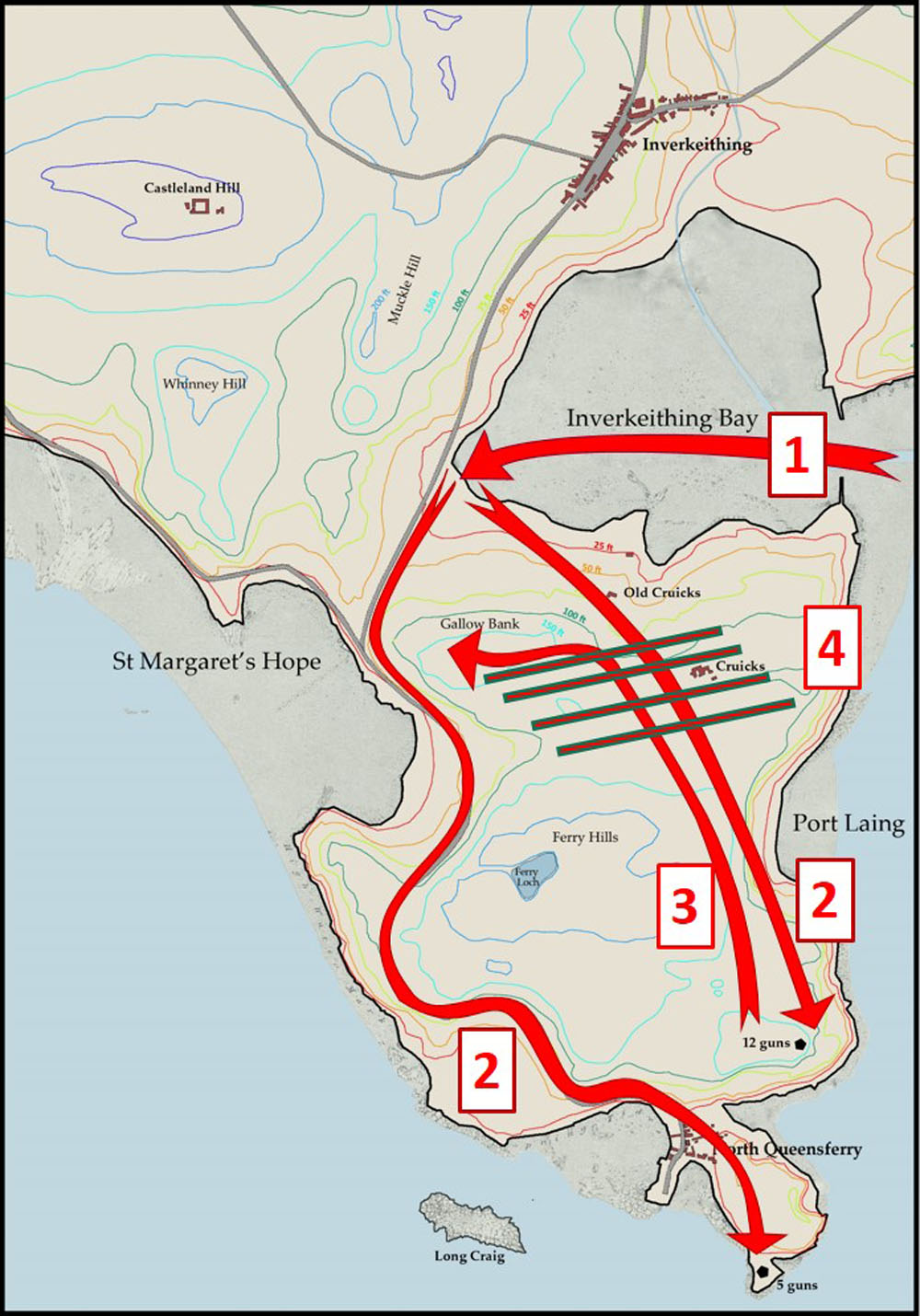The Sea-borne Invasion
| < Crossing the Forth | Δ Index | The Scots respond to the landing > |

All night on Wednesday 16th July 1651, Overton’s men crossed the river and landed on the neck of the peninsula behind the defensive batteries (1.)
Heading back south over the Ferry Hills they overcame the local battalion and captured the guns of the shore batteries (2.)
They had established a tentative beachhead in Fife. On Thursday and Friday they slaved to consolidate their position. They dragged some of the captured guns round to the top of Gallow Bank, where they dominated the approach from the land (3) and dug defensive earthworks and trenches across the north-facing slopes of Ferry Hills (4).
While Overton launched the initial invasion, Cromwell pressed on from Linlithgow towards the Torwood. He may have hoped that news of the successful landing would pull the bulk of the Scots army towards Fife. On learning that the Scots had dispatched only a relatively small force but one sufficiently strong to rebuff the invasion he ordered Col. Lambert to reinforce Overton’s beachhead and take command of the invasion force.
On Saturday 19th and early Sunday 20th Lambert ferried nearly 3,000 of his own troops and horses from Blackness (a port on the river near Linlithgow.) Landings took place all round North Queensferry. As each regiment arrived, the troops furiously dug further protective entrenchments. Lambert’s troops stood behind the entrenchments until the landings were complete.
By the morning of Sunday 20th July about 5,000 men (3,500 infantry plus 1,500 cavalry and dragoons) had arrived and were dug in on the peninsula.
| < Crossing the Forth | Δ Index | The Scots respond to the landing > |